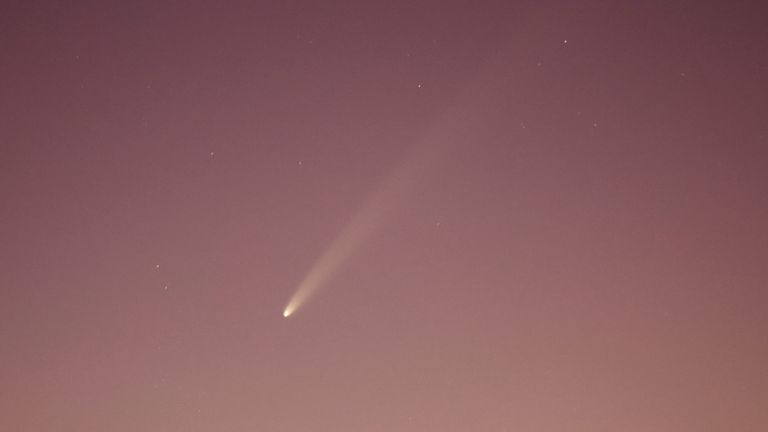Everything we thought we knew about the moon's origins may be wrong, new research suggests.
Ever since we landed the first humans on the moon, scientists have thought that our lone lunar companion formed in the wake of a violent collision between the Earth and another rocky planet.
However, according to a new paper in The Planetary Science Journal, the moon might actually have been stolen, snatched out of space from the orbit of another celestial body during a close encounter.
The collision theory, also known as the "Giant Impact Hypothesis", proposes that the moon was created from the debris of a massive collision between the early Earth and a Mars-sized protoplanet, often referred to as Theia.
This impact is thought to have been so energetic that it vaporized parts of both Earth and Theia, ejecting vast amounts of material into space which, under the force of gravity, eventually coalesced into the moon.
This theory was developed after the Apollo missions to account for several key observations about the moon's composition.
For example, analysis of moon rock revealed that it was calcium-rich and basaltic, similar to that of the bulk composition of the Earth's mantle — and both had similar isotopic fingerprints. In addition, the moon's orbit has a similar orientation to Earth's axis of rotation.
At the Kona Conference in Hawaii in 1984, planetary scientists from around the world agreed that the moon likely resulted from a collision around 4.5 billion years ago.
"The Kona Conference set the narrative for 40 years," study co-author Darren Williams, a professor of astronomy and astrophysics at Penn State Behrend, said in a statement.
Now, however, researchers from Penn State suggest that the moon may have instead been captured during a close fly-by of another rocky object in the early solar system, swiping the moon from its orbit around the other body in something known as a "binary-exchange capture."
This is because the moon appears to orbit in a different place than where it should if it had formed from debris after a collision, as that would be expected to merge above the equator of the planet.
"The moon is more in line with the sun than it is with the Earth's equator," Williams said.
In the paper, the researchers describe how they analyzed changes in the size and shape of the moon's orbit over time, and determined that it may indeed have been captured from another orbit.
The moon is thought to have had an elliptical orbit at first, which slowly became more circular and as it got closer to the Earth. Over time, the moon then started to drift away from our planet, out to the distance where it orbits today.
"Today, the Earth tide is ahead of the moon," Williams said. "High tide accelerates the orbit. It gives it a pulse, a little bit of boost. Over time, the moon drifts a bit farther away."
The moon is still moving away from us gradually, at a rate of about an inch and a half every year.
"The moon is now so far away that both the sun and Earth are competing for its attention," Williams said. "Both are pulling on it."
This kind of moon-capture has been seen to have occurred elsewhere, with Neptune's moon Triton being suspected to have been snatched into orbit from a binary asteroid system located in the Kuiper Belt at the edge of our solar system.
While this doesn't totally prove that the moon was captured rather than formed from a collision, the researchers are excited at the prospect of an alternative explanation.
"No one knows how the moon was formed," he said. "For the last four decades, we have had one possibility for how it got there. Now, we have two. This opens a treasure trove of new questions and opportunities for further study."
Do you have a tip on a science story that Newsweek should be covering? Do you have a question about the moon's origins? Let us know via science@newsweek.com.
References
Williams, D. M., & Zugger, M. E. (2024). Forming Massive Terrestrial Satellites through Binary-exchange Capture. The Planetary Science Journal, 5(9), 208. https://doi.org/10.3847/PSJ/ad5a9a
Disclaimer: The copyright of this article belongs to the original author. Reposting this article is solely for the purpose of information dissemination and does not constitute any investment advice. If there is any infringement, please contact us immediately. We will make corrections or deletions as necessary. Thank you.



